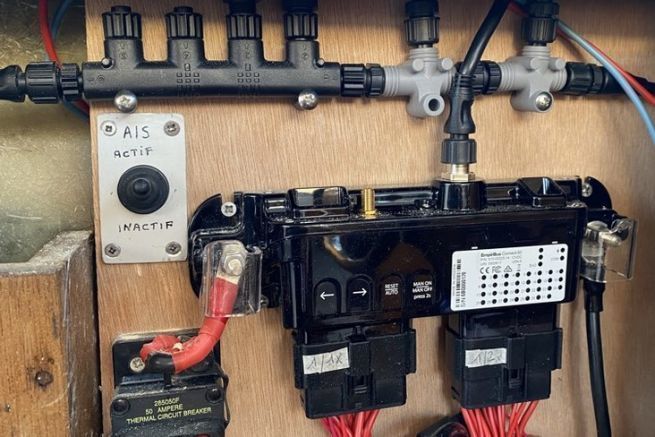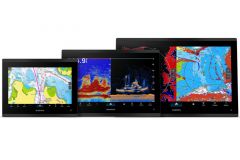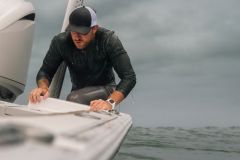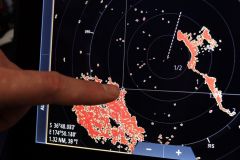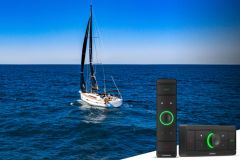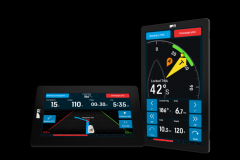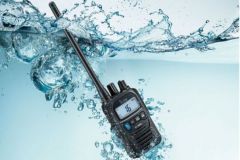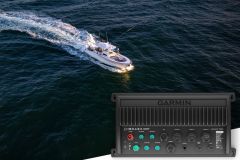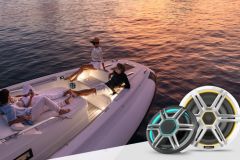On a boat, it is possible to install autonomous and independent electronic devices. However, this would mean depriving yourself of many functions, such as allowing the pilot to follow a route plotted on the electronic chart, or to contact a boat that you have detected on your AIS and displayed on your chart with the VHF. For all this to be operational, the devices must be linked together. The NMEA 2000 standard comes to the rescue of boaters by making their lives much easier. Demonstration of an installation made during a refit of a 1973 boat.
Few devices, but already a complete network
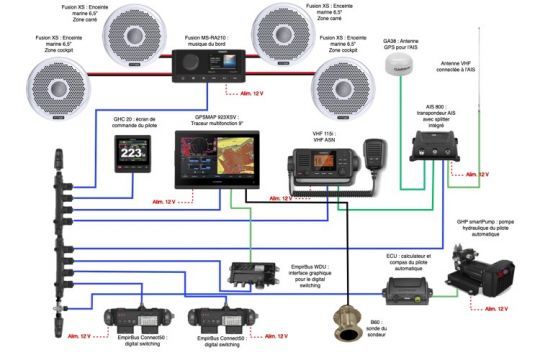
On my Amerglass, I chose to connect the devices together via a NMEA 2000 network. The idea is to make them communicate with each other:
- The Garmin GPSMap923XSV multifunction chartplotter will be the centerpiece of the installation, because it is from it that you will be able to navigate at sea and control the various devices and auxiliary comfort equipment.
- The Garmin 115i VHF
- The Garmin AIS800 transponder
- The Garmin GHP SmartPump autopilot and its GHC 20 display
- Fusion MS-RA210 audio equipment
- The 2 Connect50 EmpirBus that will manage the onboard electrical network
With the different modules, my network, however simple, already has 10 entries.
The choice of NMEA 2000 was dictated by several reasons:
- The devices are easily connectable and compatible between brands
- Installation is easy
- The configuration is easily upgradable
Don't design your network on the sly
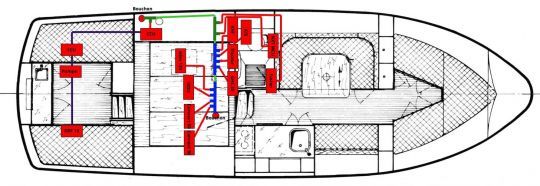
The configuration of a NMEA 2000 network has strict criteria. First, a vertical column (backbone) must be created, starting with a plug and ending with another plug. On this line, T's (called nodes) are connected that link each of the devices. From these nodes, each branch must be a maximum of 6 m long.
On my boat, the devices are grouped around the helm station. This simplified the installation. Except that the autopilot is on the stern and the music player is in the forward cabin.
As you can see on the diagram, I have built my central network around the cockpit between the electrical panel and the dashboard. The more distant devices (pilot and music) are connected by longer cables.
Child-friendly connections
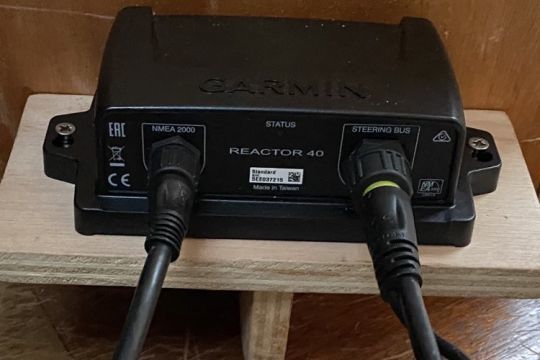
The installation was not a problem. In the case of a refit like the one on my boat, you have to take into account the problem of cable routing. Indeed, they are delivered with soldered plugs at both ends. This ensures a good connection, but you need enough room for the plug (about 1 cm in diameter) to run behind the various partitions.
The advantage of NMEA 2000 is the ease of connecting devices. No special tools or electronic skills are required. Just plug the plugs into the T's and the T's into the network. The ring is then used to seal the whole thing and prevent it from being disconnected by vibrations. A real child's play, impossible to make a mistake with the presence of the polarizing pins. The days of the NMEA 183 network with its many different colored wires and no standardization between brands seem to be long gone

 /
/ 